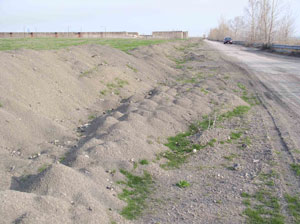| Frequently Asked Questions | Address Locator | Advanced Map |
|
Frequently Asked Questions
1. How much total storage capacity is available at all Great Lakes CDFs?
2. How much storage capacity is available at a CDF in a given state?
3. How much CDF storage capacity is available in a given Great Lake basin?
4. How much sediment material is dredged on average annually from all federally maintained Great Lakes harbors?
5. How much sediment material is dredged on average annually from federally maintained harbors in each lake basin?
6. How much sediment material is dredged on average annually from federally maintained harbors in each state?
7. How much dredged material goes into all Great Lakes CDFs annually?
8. How much dredged material goes into CDFs in each lake basin annually?
9. How much dredged material goes into CDFs in each state annually?
10. How much total dredged material annually goes to open lake disposal in the Great Lakes?
11. How much dredged material annually goes to open lake disposal in each lake basin?
12. How much dredged material annually goes to open lake disposal in each state?
13. How much dredged material is used beneficially for near shore placement/beach nourishment in the total basin?
14. How much dredged material is used beneficially for near shore placement/beach nourishment in each lake basin?
15. How much dredged material is used beneficially for near shore placement/beach nourishment in each state?
16. How long will we be able to place material in Great Lakes CDFs at present rates if no material is removed for beneficial uses?
17. How much dredged material stored in CDFs is clean material that is ready for beneficial use in the total basin?
|
Information provided from this web site is generated from data provided by the U.S. Army Corps of Engineers. State and local authorities may be able to provide additional information about sediment availability in your area
 25,337,810 cubic yards
25,337,810 cubic yards